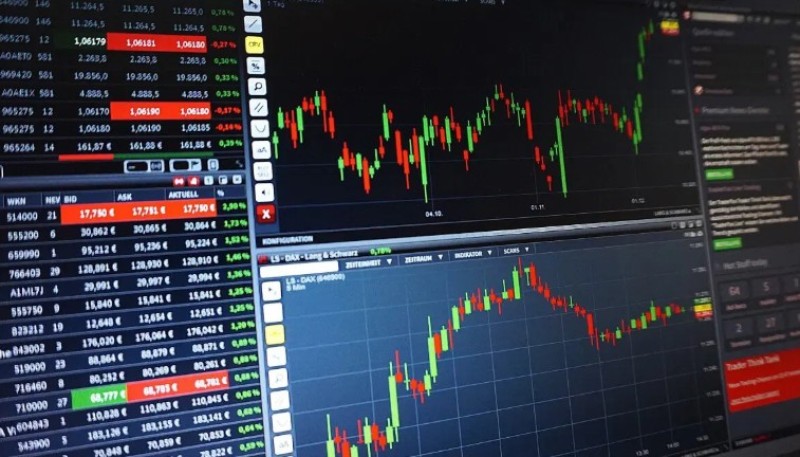Cryptocurrency trading has become far more user-friendly in recent years, yet one issue still frustrates traders at every level: hidden fees. Even in 2025 - an era of lightning-fast platforms and AI-driven exchanges - surprise charges can quietly eat into profits, as mentioned in a CryptoNinjas guide. Many traders only discover the real cost of their transactions when it’s too late. This article breaks down the subtle fees most people overlook, why they matter, and how traders can avoid them with smart habits.
Why Hidden Crypto Fees Still Exist in 2025
Despite the industry’s push toward transparency, exchanges remain businesses. They profit not only from obvious maker/taker fees but also from cleverly structured charges buried in terms and conditions.
Some fees arise from blockchain limitations, others from exchange policy, and some simply from user mistakes (e.g., withdrawing via the wrong network). Understanding each category is the first step toward protecting your capital.
Major Types of Hidden Fees Traders Overlook
1. Trading Fees That Aren’t So Obvious
Most traders look only at the advertised maker/taker rate. But exchanges often add:
Spread Markups A wider spread means you quietly pay more per trade. Some platforms keep spreads artificially high during volatile periods.
Tip: Compare the live buy/sell price on multiple exchanges before placing an order.
2. Withdrawal & Network Fees
Withdrawal fees are the most infamous “silent wallet drainers.” They often look small at first glance but can quietly erode profit margins, especially for active traders. Many users don’t realize how much these charges accumulate until they review months of transaction history, which warns that withdrawal-related costs often exceed expectations if not monitored closely.
Fixed Withdrawal Fees: Some exchanges charge a fixed withdrawal rate regardless of blockchain congestion. This can be expensive for traders moving smaller amounts.
Network Congestion Fees: In 2025, networks like Bitcoin and Ethereum still fluctuate in cost depending on traffic. A withdrawal at the wrong time can cost you more than the trade itself.
Tip: Use alternative chains (e.g., Tron, Arbitrum) for transfers when possible.
3. Deposit Fees (Yes, Some Platforms Still Do This)
While many major exchanges removed deposit fees years ago, smaller or regional platforms still charge them-especially for fiat deposits. Some banks may also impose intermediary charges when sending funds internationally.
Tip: Check both exchange and bank fee schedules before depositing.
4. Conversion & Currency Exchange Fees
Buying USDT using EUR, VND, GBP or other local currencies can trigger multiple fee layers:
- Exchange currency conversion markup
- Third-party payment processor fees
- Hidden FX spread differences
- Weekend or “high-risk period” surcharges
Tip: Use stablecoins already denominated in your trading currency to avoid repeated FX conversions.
5. Inactivity Fees
Yes, these still exist-and they catch many traders off guard. Some exchanges charge a small monthly fee if an account has no trading activity for a set number of days.
This is more common on CFD/derivative platforms, but even spot exchanges introduced inactivity fees in 2023–2024 to promote user engagement.
Tip: Set a reminder to perform one small trade every few months, or move assets to a non-custodial wallet.
6. Margin & Leveraged Trading Fees
Margin trading introduces a new category of fees:
Overnight Funding Charges: Holding leveraged positions overnight or across weekends can incur sizable fees.
Hidden Liquidation Charges: Some platforms charge a small “liquidation handling fee” that appears only when a position closes automatically.
Spread Expansion Under Leverage: A wider spread under leverage means you lose more on entry and exit.
Tip: Always check margin fee tables-each pair has its own rate.
7. Gas Fees on Decentralized Exchanges (DEXs)
Even though Layer-2s dramatically reduced gas costs, certain activities still require elevated fees:
- Swapping low-liquidity tokens
- Using complex DeFi contracts
- Yield-farming interactions
- Cross-chain swaps
Gas fees are non-negotiable, but their impact can be minimized.
Tip: Execute transactions during low-traffic windows (typically early morning UTC).

How to Avoid Hidden Fees (Practical 2025 Checklist)
1. Choose Transparent Platforms
Reputable exchanges now publish real-time fee dashboards. Crypto-native users in 2025 overwhelmingly prefer exchanges that:
- Show spread % upfront
- Display fee previews before every trade
- Offer multi-network withdrawal options
- Provide clear breakdowns of conversion costs
If a platform hides these details, consider it a red flag.
2. Compare Costs Across Multiple Exchanges
Before trading a pair, compare:
- Maker/taker fees
- Spread
- Network withdrawal fees
- FX conversion costs
- Funding fees (if using margin)
A small difference can turn into thousands over time for active traders.
3. Plan Your Withdrawals
A smart trader withdraws assets:
- During low gas periods
- On cheaper networks
- In larger, less frequent batches
- Using stablecoins with minimal fees (e.g., USDT-TRC20)
Avoid withdrawing during peak blockchain hours or right after major news events.
4. Use Limit Orders Whenever Possible
Market orders often increase the effective spread cost. Limit orders allow precise control, reduce slippage, and often result in lower fees on maker-friendly platforms.
5. Double-Check the Network Before Sending Crypto
Accidentally withdrawing USDT on ERC-20 instead of TRC-20 can mean paying 20× more in fees.
Many hidden costs come from choosing the wrong chain. Always verify:
- Network
- Estimated fee
- Estimated processing time
6. Take Advantage of Fee Discounts
In 2025, most exchanges offer fee-waiver programs:
- Paying fees in the exchange’s native token
- Holding VIP membership tiers
- Using referral codes or sign-up bonuses
- Completing platform quests or trading challenges
Stacking these incentives can reduce fees dramatically over time.
Conclusion: Hidden Fees Are Avoidable-If You Know Where to Look
Even with more transparency in 2025, hidden fees remain one of the most underestimated drains on crypto profits. But traders who understand how fees work-and who routinely compare platforms, networks, and withdrawal methods-can eliminate most unnecessary costs.
The key is awareness. Every small fee adds up, and long-term traders benefit enormously from strong fee hygiene.
With the right approach, crypto trading becomes cleaner, cheaper, and far more profitable.
 Editorial staff
Editorial staff

 Editorial staff
Editorial staff


